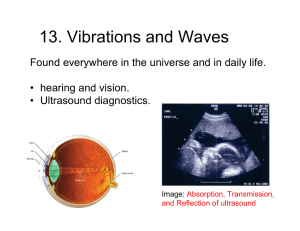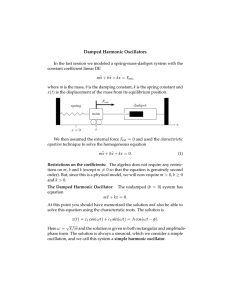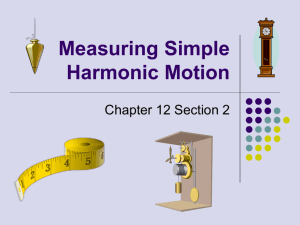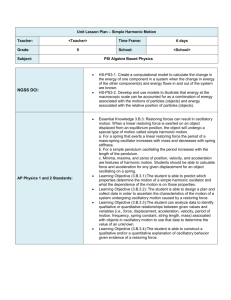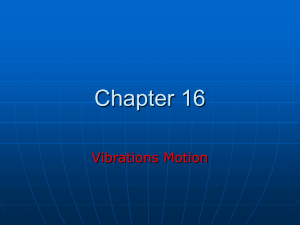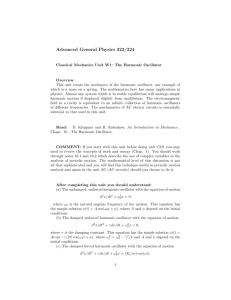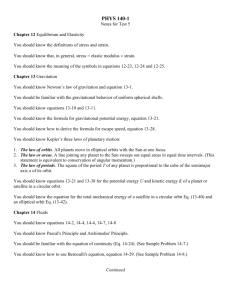INTRO TO SIMPLE HARMONIC MOTION QUESTIONS
advertisement
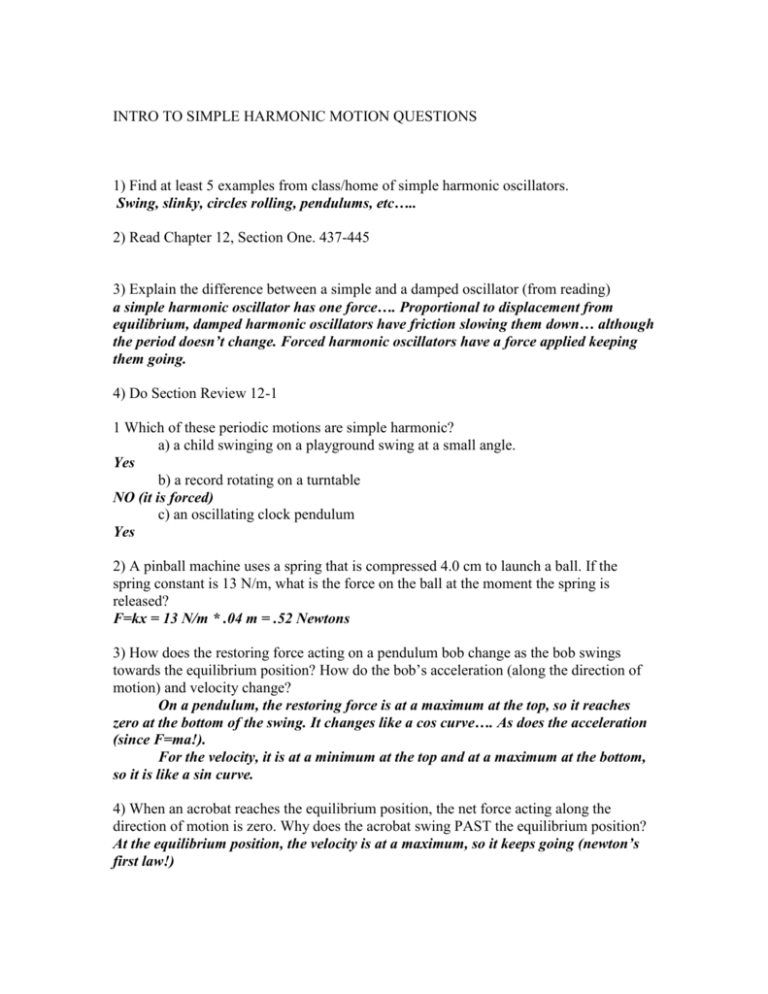
INTRO TO SIMPLE HARMONIC MOTION QUESTIONS 1) Find at least 5 examples from class/home of simple harmonic oscillators. Swing, slinky, circles rolling, pendulums, etc….. 2) Read Chapter 12, Section One. 437-445 3) Explain the difference between a simple and a damped oscillator (from reading) a simple harmonic oscillator has one force…. Proportional to displacement from equilibrium, damped harmonic oscillators have friction slowing them down… although the period doesn’t change. Forced harmonic oscillators have a force applied keeping them going. 4) Do Section Review 12-1 1 Which of these periodic motions are simple harmonic? a) a child swinging on a playground swing at a small angle. Yes b) a record rotating on a turntable NO (it is forced) c) an oscillating clock pendulum Yes 2) A pinball machine uses a spring that is compressed 4.0 cm to launch a ball. If the spring constant is 13 N/m, what is the force on the ball at the moment the spring is released? F=kx = 13 N/m * .04 m = .52 Newtons 3) How does the restoring force acting on a pendulum bob change as the bob swings towards the equilibrium position? How do the bob’s acceleration (along the direction of motion) and velocity change? On a pendulum, the restoring force is at a maximum at the top, so it reaches zero at the bottom of the swing. It changes like a cos curve…. As does the acceleration (since F=ma!). For the velocity, it is at a minimum at the top and at a maximum at the bottom, so it is like a sin curve. 4) When an acrobat reaches the equilibrium position, the net force acting along the direction of motion is zero. Why does the acrobat swing PAST the equilibrium position? At the equilibrium position, the velocity is at a maximum, so it keeps going (newton’s first law!)
